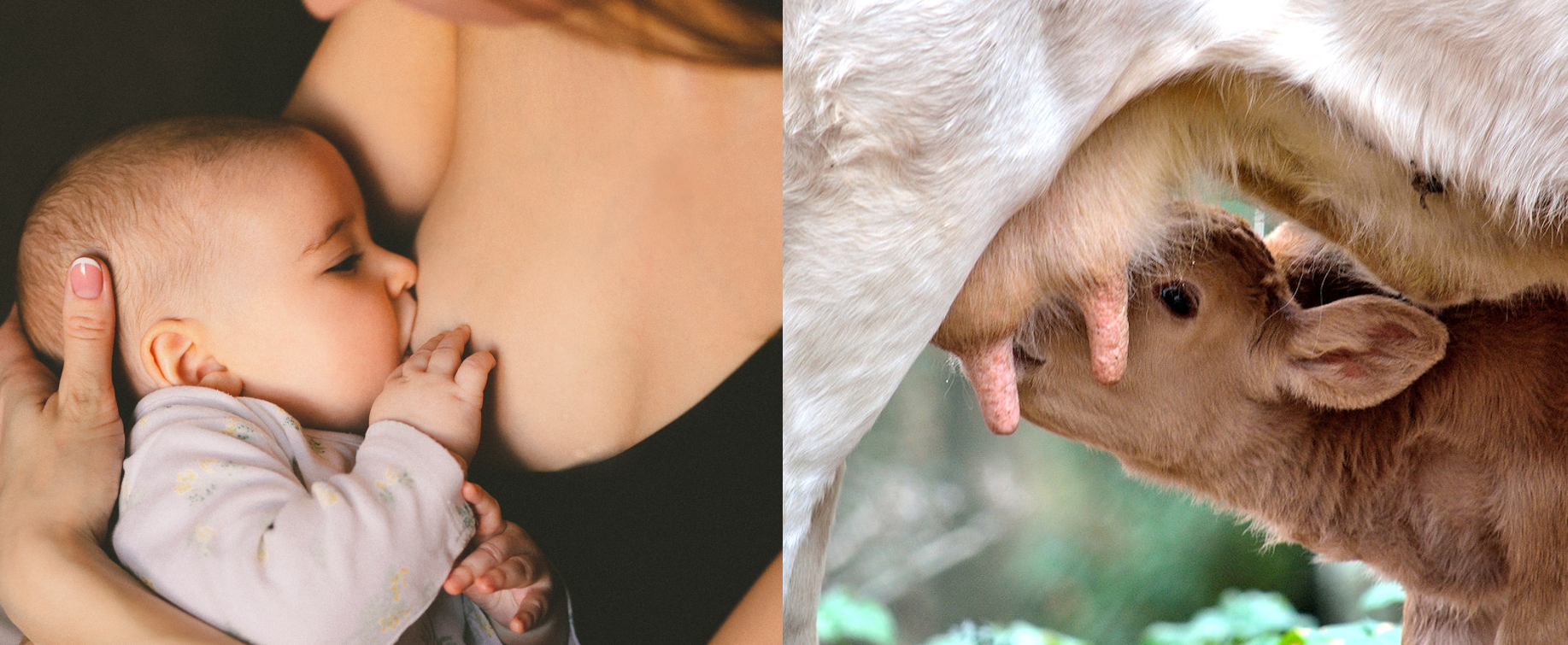
What is milk? According to the Oxford Concise Medical Dictionary, milk is “the liquid food secreted by female mammals from the mammary gland. It is the sole source of food for the young of most mammals at the start of life. Milk is a complete food in that it has most of the nutrients necessary for life: protein, carbohydrates, fat, minerals, and vitamins. The composition of milk varies very much from mammal to mammal.”
The composition of milk varies so much because different species have very different nutritional and developmental needs. As such, the milk from one species, which nature has designed to perfectly meet the needs of their young, presents significant challenges when attempting to meet the differing needs of another species. While humans have created formula based on cow’s milk that meet the minimum needs for infant survival, the challenges of feeding another species’ milk are still very apparent in the form of cow’s milk allergy, a disease that 17% of infants suffer from. Despite this, people have accepted the use of cow’s milk as the basis for infant formula when feeding their little ones.
Can you imagine drinking milk from a chimpanzee or feeding a chimpanzee formula to an infant? It feels unnatural. Yet, it feels perfectly acceptable to do the same with cow’s milk, despite the fact that chimpanzees are biologically closer to humans than cows are. This is because humans have been using cow’s milk in infant formula as a substitute for breast milk for over 150 years, since we first learned how to adjust cow’s milk to merely “make it work” for human infants. Over that long period of time, the use of cow’s milk to feed humans has become normalized. While cow’s milk was the best available option to serve as a breast milk backup long ago, we now have the technology to create nutrition solutions that are so much closer to a human infant’s perfect food. Just because we learned how to tailor cow’s milk to meet the minimum nutritional needs of an infant long ago does not change the fact that it is not an ideal source of nutrition for an infant.
There are some key differences in the composition of cow’s milk and breast milk that make it unideal for an infant. In fact, human infants cannot survive on pure cow’s milk alone, which does not provide all the nutrients needed and puts them at great risk of intestinal bleeding, among other side effects, as per the AAP and CDC. To name a few of these differences, breast milk contains significantly more carbohydrates compared to cow’s milk, almost four times less protein, and a similar amount of fat, yet the fats are of different types. In addition to the amount of protein, the types of protein in human milk are also quite different. While cow’s milk protein is made up of 20% whey proteins and 80% casein proteins, which are much harder to digest, breast milk’s protein is made up of 60% whey and 40% casein. Not to mention that there are specific proteins present in breast milk and absent in cow’s milk and vice versa, and the chemical structure of so called “equivalent” cow’s milk proteins do not match those of breast milk. These fundamental differences mean that an infant formula based on cow’s milk, or any animal’s milk for that matter, cannot come close to matching breast milk, no matter how the milk is adjusted to make it work for a human.
While cow’s milk was the best option for an infant formula 150 years ago and has long been the industry standard, it still does not provide everything a human baby needs for proper growth and development. Even now, after over a century of improvements to cow’s milk formula, there still exists a wide gap between the nutrition that infant formula and breast milk provide, which is quite apparent when you see the AAP’s long list of diseases that exclusively formula fed babies have an increased risk of developing. To narrow this gap, we must embrace new technologies to produce novel ingredients that are much closer to breast milk and can replace cow’s milk as the basis for infant nutrition substitutes.